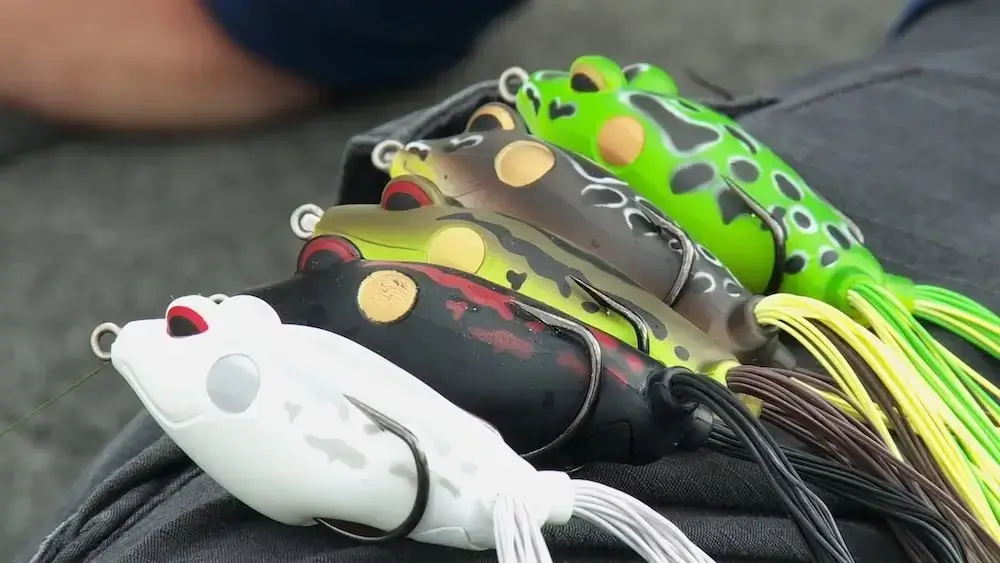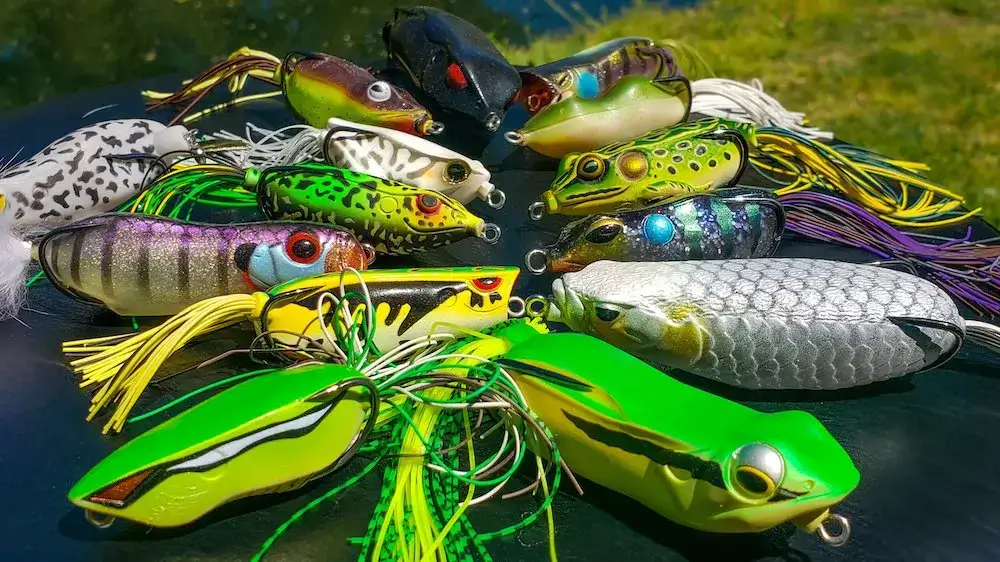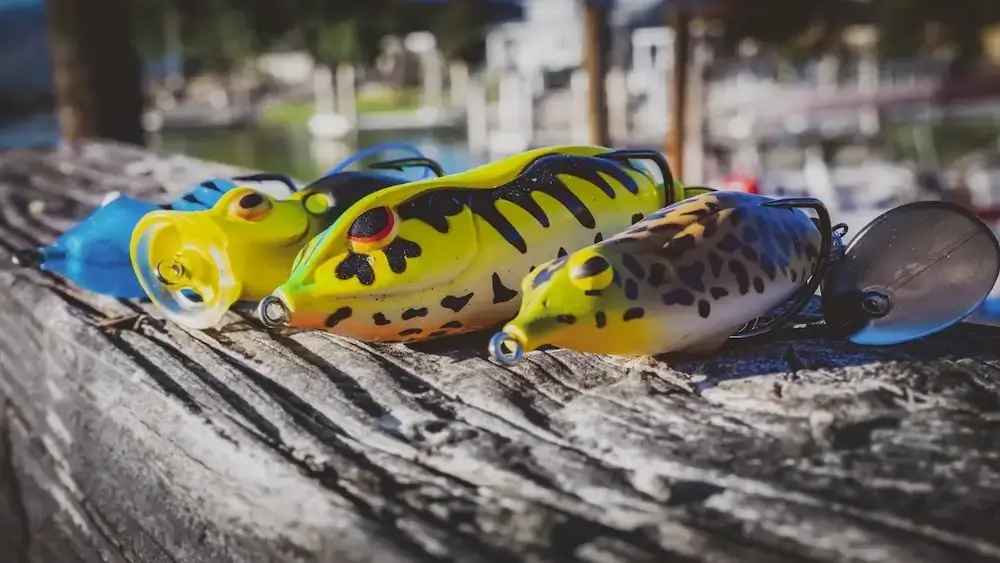When it comes to bass fishing, there are many different things that you need to know to be successful. One of the most important decisions you will make is what color frog to use.
In this blog post, we will discuss the different colors of frogs and what situations they are best suited for. We will also provide some tips on how to use them effectively.
What Color Frog to Use for Bass Fishing

The debate of what color frog is best for fishing has been around for years. Some say that certain colors work better than others, while some claim that it doesn’t matter what color you use. So, what’s the verdict?
After doing some research and talking to experienced bass anglers, we’ve concluded that it ultimately comes down to what color frog you feel most comfortable using. If you’re confident using a black frog, then go for it. The same goes for any other color.
It’s important to use whatever color makes you feel the most comfortable. If you’re confident in your choice of frog, you’re more likely to catch fish.
Which Frog Color Is Best for Bass Fishing?
There are a few different colors of frogs that can be used when bass fishing, but what is the best color?
- The first color to consider is green. Green frogs are often used because they are easy to see in the water, and they contrast well with the lily pads.
- Another color to consider is brown. Brown frogs are less visible in the water, but they can be effective in murky water.
- The last color to consider is black. Black frogs are the least visible in the water, but they can be effective in very clear water.
How to Choose the Right Frog for Your Needs
With so many different types of frogs on the market, it can be hard to know which one is right for you. Here are a few things to consider when choosing a frog for bass fishing:
The Type of Water You’ll Be Fishing in
One of the most important things to consider when choosing a frog is the type of water you’ll be fishing in. Are you going to be fishing in ponds, lakes, or rivers?
Each type of water has different vegetation types, which can affect what color frog will work best.
Ponds are typically smaller and have more dense vegetation, so a darker frog-like black or brown can be a good choice. On the other hand, lakes usually have more open water with less vegetation, so a lighter frog-like green or white can work well.
Rivers often have faster-moving water and more debris, so a bright color like red or orange can help the frog stand out.
The Time of Day You’ll Be Fishing
Another thing to consider is the time of day you’ll be fishing. Frogs are most active at night, so if you’re planning on fishing during the day, you might want to choose a brighter frog to help it stand out.
However, at night, darker colors can be a good choice as they can be harder for predators to see.
What Type of Lures You’ll Be Using

The lure you’re using can also affect what color frog you should choose. For example, if you’re using a topwater lure, you’ll want to choose a frog that’s the same color as the baitfish in the water you’re fishing. This will help it blend in and avoid being eaten by predators.
If you’re using a plastic frog, on the other hand, you can be a little more flexible with your color choices. Try to match the frog’s color to the type of vegetation in the water you’re fishing.
For example, if you’re fishing in a pond with many green plants, a green frog can help it blend in and avoid being seen by bass.
Frog Color for Bass in Dirty Water
The frog’s color doesn’t matter as much when fishing in dirty water. The main concern is to make sure the frog is visible to the fish.
In these conditions, it’s often better to use a brighter colored frog to stand out more.
However, if you’re using a topwater bait like a buzzbait or a spinnerbait, you’ll want to use a black or dark-colored frog to blend in with the bait and don’t look out of place.
Frog Color for Bass in Clearwater
If you’re fishing for bass in clear water, you’ll want to use a green or brown frog. These colors will help the frog blend in with the vegetation and make it less visible to the fish.
If you’re fishing for bass in murky water, you can use a black or white frog. These colors will help the frog stand out from the background and make it more visible to the fish.
The Best Time of Year to Use a Frog for Bass Fishing

If you’re looking to fish with a frog during the spring and summer months, you’ll want to use a darker-colored frog.
The water is generally warmer during these months, so the bass will be more likely to be found in deeper waters. A darker color frog will help you attract bass lurking in these depths.
When the water is cooler in the fall and winter months, you’ll want to use a lighter-colored frog. This is because the bass will be more likely to be found in shallower waters during these months.
A lighter color frog will help you attract bass that are nearer to the water’s surface.
No matter what time of year it is, you can always find a color of frog that will work well for bass fishing. Just remember to adjust your selection based on the season and the depth of water you’ll be fishing in.
With a little trial and error, you’ll be sure to find the perfect color frog for your next bass fishing adventure.
Tips and Tricks for Using a Frog for Bass Fishing
If you’re using a frog for bass fishing, keep a few things in mind. Here are some tips and tricks:
- Use a lighter-colored frog in murky water and a darker-colored frog in clear water.
- Try different colors of frogs until you find one that the fish seem to be attracted to.
- If the frog is not working, try another bait.
With these tips in mind, you should be able to find the perfect color frog for bass fishing.
Final Thoughts
There are a few things to consider when it comes to what color frog to use for bass fishing. The type of water you’ll be fishing in, the time of day, and the lure you’re using can all affect what color will work best. Experiment with different colors to see what works best in different situations.

